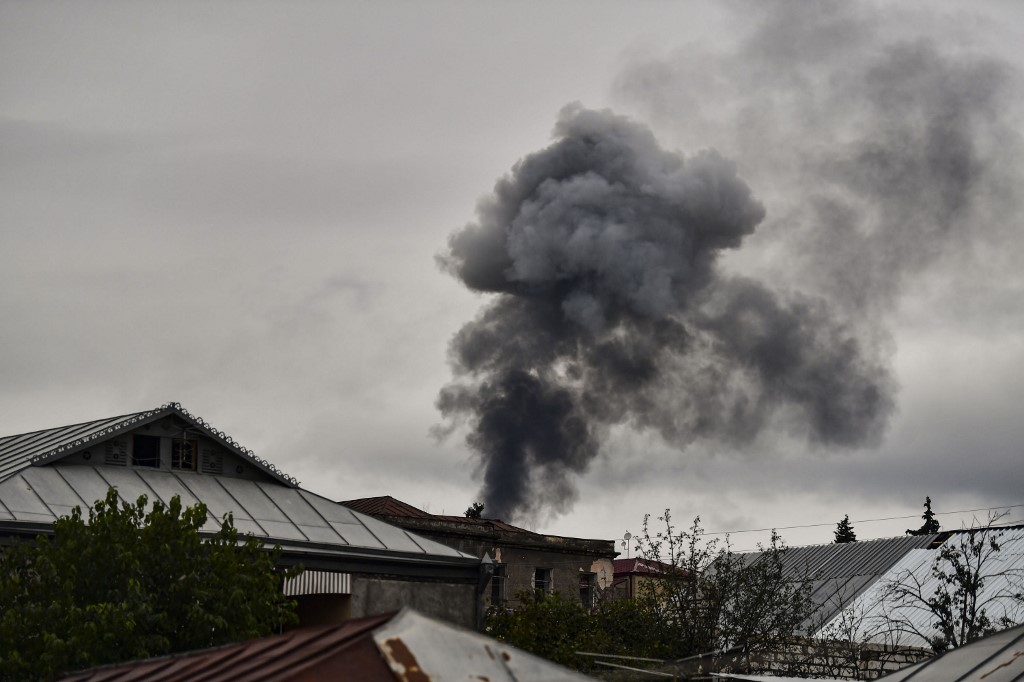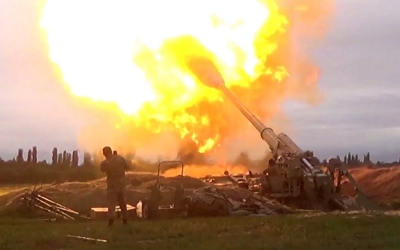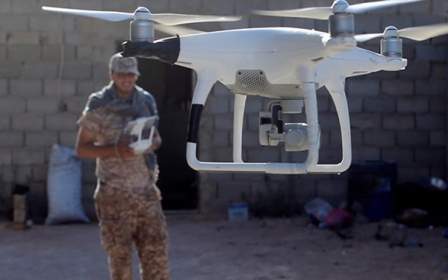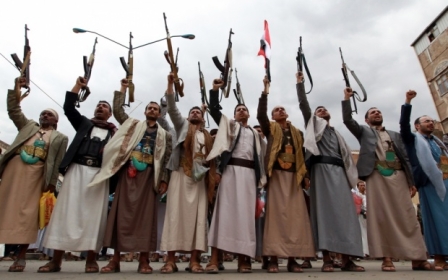Armenia-Azerbaijan conflict: Why Turkey is outsourcing its wars
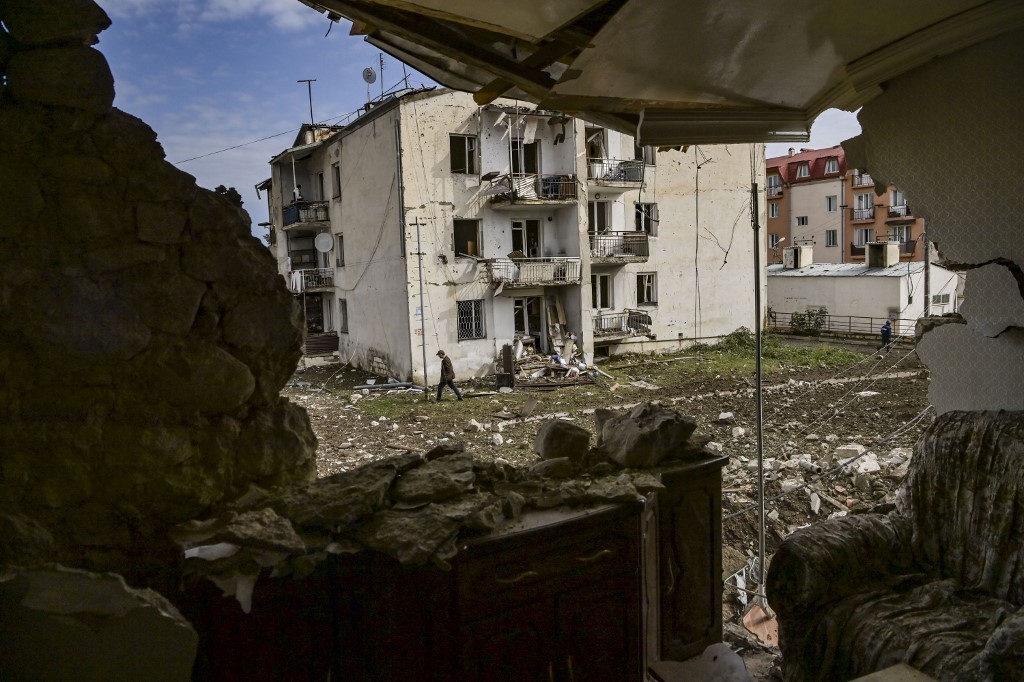
Reports that Turkey has sent Syrian mercenaries to aid its ally Azerbaijan in Nagorno-Karabakh, alongside an earlier mission in Libya, mean that Ankara has now deployed these fighters outside of Syria twice in the last year.
With both Ankara and Tehran seemingly benefitting from this practice, it would be unsurprising if other regional powers followed suit
While Turkey has sought to protect Syria’s last remaining rebels from conquest by Damascus, it is also now using them to project regional power. In essence, Turkey is utilising Syrian fighters to outsource its wars.
The exact role of Syrian fighters in Nagorno-Karabakh is unclear, but multiple reports suggest that between 1,000 and 1,500 are now in Azerbaijan. Some are drawn from the Syrian National Army militia established by Turkey to fight Syrian President Bashar al-Assad and the Kurdish People’s Protection Units (YPG), while others appear to have signed up independently for Turkish private security firms.
Most are poor Syrians, often displaced persons fleeing Assad, who are struggling to scratch out a living in the narrow northwestern strip of Syria stretching from Idlib to Jarablus, held by Turkey and its rebel allies. Fighters travelling to Azerbaijan, and before it Libya, cited the draw of the $1,500 monthly salary and $7,800 life insurance, sums they couldn’t possibly earn staying at home.
Many took up arms to fight Assad, but now the need to survive sees them far from home, fighting someone else’s war.
New MEE newsletter: Jerusalem Dispatch
Sign up to get the latest insights and analysis on Israel-Palestine, alongside Turkey Unpacked and other MEE newsletters
Using mercenaries offers several benefits to Ankara. The fighters are not cheap, earning considerably more than the average Turkish soldier, but the political cost to President Recep Tayyip Erdogan is considerably less than sending his conscripts into battle. The 50 Syrian casualties reported thus far would have generated far more criticism in Turkey had they been Turkish.
Utilising mercenaries also allows Erdogan’s government plausible deniability - Ankara still hasn’t admitted to sending troops - while using private forces allows for swifter deployments without parliamentary approval or public scrutiny. The deployment to Azerbaijan is relatively modest and more political than military, showing support for its ally and trying to warn off Armenia’s main ally, Russia.
In Libya, though, the deployment of Syrians helped to shift the military balance in favour of Turkey’s allies in Tripoli.
Proxy battles
Turkey’s use of Syrian fighters fits an emerging pattern of proxy warfare in the Middle East. While external players backing rival sides in Middle Eastern civil wars is nothing new, the number of conflicts in the region drawing in foreign sponsors has dramatically risen since the Arab uprisings of 2011.
Since then, Turkey, Iran, Saudi Arabia, Qatar, the UAE, Russia and various western states have varyingly sponsored local fighters in Syria, Libya, Yemen, Iraq and now the Armenia-Azerbaijan conflict.
Turkey stands out, however, in using fighters from foreign countries. While it initially deployed its Syrian allies to fight compatriots in Syria, the YPG, it later sent them to Libya, and now to Azerbaijan. In many ways, this mimics Iran’s use of foreign fighters, and might have been learned by Ankara observing its rival’s successes in Syria.
There, Tehran deployed Iraqi, Afghan and Pakistani fighters to supplement Assad’s forces. While religious motivation was clearly a factor, like Turkey, Iran used financial incentives.
In particular, the Afghans fighting in Syria were primarily drawn from poor Afghan refugees living in Iran. Like the Syrians signing up to Turkey’s private security firms, their desperate need to earn a living was exploited by Iran’s Islamic Revolutionary Guard Corps needing bodies for its outsourced wars.
Alarming trend
This is an alarming trend. First Iran, and now Turkey, have been able to project power using unconventional means in an outsourced way, paying foreign fighters from third-party countries to reduce any domestic backlash or accountability. They have recruited these fighters from desperate and poverty-stricken groups of refugees and IDPs, increasingly seeing mercenary service as their only way to survive.
With both Ankara and Tehran seemingly benefitting from this practice, or at least facing no severe consequences, it would be unsurprising if other regional powers followed suit.
Already, Russia has supplemented its mostly Russian mercenaries fighting in Libya with Syrians facing a similarly desperate plight in Assad’s bankrupt economy. Other regional powers like the UAE have used western mercenaries in Libya and Yemen in the past, and might see the advantage of switching to cheaper, local forces.
With millions of Syrian, Yemeni, Afghan and Libyan refugees and IDPs still living in squalid camps with little hope of returning home, will other regional powers begin to see them as potential pools of cheap, expendable fighters for their proxy wars?
The replication of this Turkish and Iranian model of mercenary war, combined with a wealth of poverty-stricken refugees, may spell even more bloodshed in a region awash with conflict.
The views expressed in this article belong to the author and do not necessarily reflect the editorial policy of Middle East Eye.
Middle East Eye delivers independent and unrivalled coverage and analysis of the Middle East, North Africa and beyond. To learn more about republishing this content and the associated fees, please fill out this form. More about MEE can be found here.



